The Polyculture Market Garden Study - Results from Year 1- 2015
Encouraged from results we have been seeing in our home garden polycultures, last year we decided to scale up our efforts and explore the potential of a polyculture market garden.
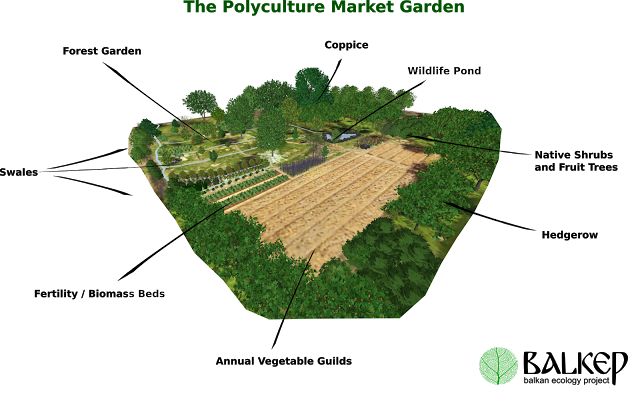
We put a calling out for a crew to help us develop the garden and run the study and had a great response. Huge thanks go to Plamen Petkov, Anna Boncheva, Trisha Franke, Petar Csobán, Alina Pekalska, Kristian Deltchev, Alexandra Broda, Hannah Filer, Dobril Vasilev, Katrine Bach Hansen, Kyle De Luca and Katalin Prodanov for contributing their time and energy, and for making year one of our study possible.
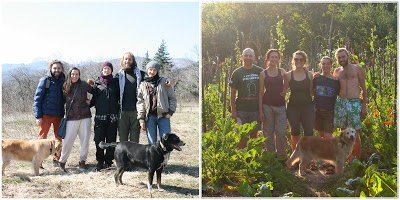
The Team on site in March and August
The aim of the study is to gather data to help us address the following questions;
Can we provide clean, nutritious, affordable food whilst enhancing biodiversity?
How bio-diverse can our food producing systems be?
How productive can polycultures be?
How much time do such gardens take to establish and manage?
How economically viable are these gardens?
This first year of the study we looked at the time it took to set up the annual garden, and the inputs and outputs of a 257 m2 area of the garden producing tomatoes, basil, beans, and winter & summer squash. We have had good success with this annual polyculture in our home garden and wanted to see how well it scaled up on a new site. For more info on the cultivation methods we use in our gardens see here.
Results in Summary
During the course of the study, a team of 4 people with little or no horticultural experience established the garden study area, propagated, tended and harvested over 800 plants, producing 358 kg of food with a market value of 1002 BGN. The operating costs for the garden worked out at 644.67 BGN, and the capital costs (one off initial costs) amounting to 939.85 BGN. The time taken to achieve this was 152 hrs over a 6 month period. Produce output per m2 was around 1.4 kg.
Garden Overview
Climate: Continental Temperate
Latitude: 42°
Elevation: 565 m
Average Annual Rainfall: 588.5 mm
Co-ordinates: 42.71259, 25.32575
Click here for the Polyculture Market Garden lo
cation (labelled as Paulownia Garden on our Project map)
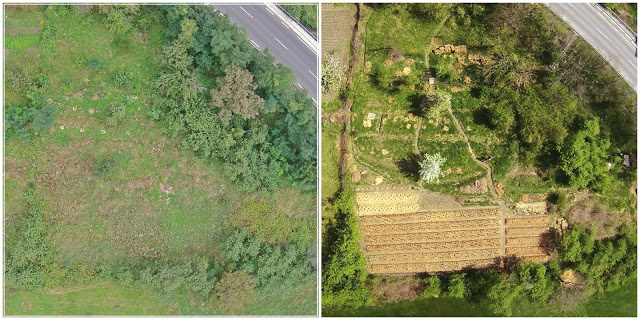
Photos by Huma showing the garden development. The six longer beds in the left hand corner (the Aceaes) of the photo above were the focus of the study.
Garden area: 256.8 m2
Cultivated beds area: 165.6 m2
Six beds: 27.6 m2 each bed
Paths: 50 cm wide 91.2 m2
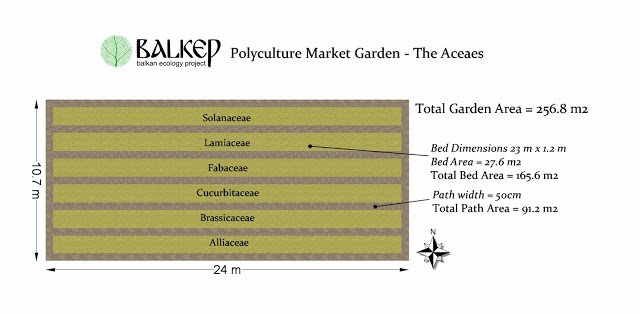
Study Area Path and Bed Layout
The beds were named after common vegetable families in order to familiarise the participants with the use of Latin and introduce them to some major plants families. They do not correspond to what was planted in the beds. For the planting schemes of each bed see below.
The Polyculture
Below is a representation of a 6 m strip of the planting scheme within each bed.
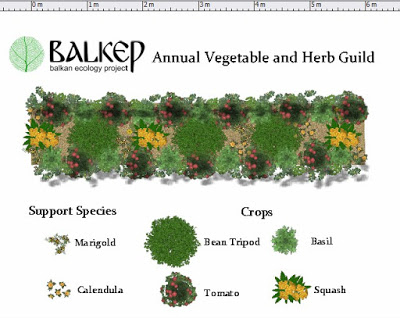
The Annual Vegetable and Herb Polyculture used in the beds
Crop and Cultivar List
Tomato - Solanum lycopersicum 'Black Krim'
Tomato - Solanum lycopersicum 'Tigerealla'
Tomato - Solanum lycopersicum 'Mixed Saved Seed'
Tomato - Solanum lycopersicum 'Rozova Magia'
Tomato - Solanum lycopersicum 'Paulina F1'
Tomato - Solanum lycopersicum 'Citrina'
Basil - Ocimum basilcium 'Sweet Genovese'
Runner Beans - Phaseolus coccineus 'Scarlet Red'
French Beans - Phaseolus vulgaris 'Cobra'
French Beans - Phaseolus vulgaris 'Blue Bean'
Courgette - Cucurbita pepo 'Black Beauty'
Bush Scallop - Cucurbita pepo
Butternut Squash - Cucurbita pepo 'Waltham Butternut'
African Marigold - Tagetes erecta
French Marigold - Tagetes patula
Pot Marigold - Calendula officinalis
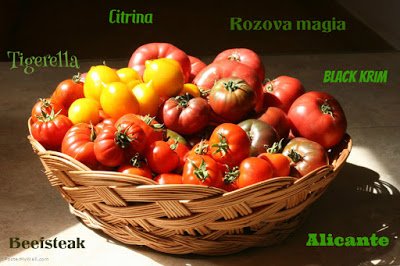
Cultivars
The table below shows the floral species composition of each bed including the different cultivars and the dates that the plants were sown or planted. Beans, courgettes and winter squash were sown, tomatoes, basil, marigolds and pot marigolds were planted.
Some hot chili peppers were also unsuccessfully grown within the beds, the small yields of these plants are not considered in these records.
click here to see table: http://balkanecologyproject.blogspot.bg/2015/12/the-polyculture-market-garden-study.html
Soil Analysis
Physical Analysis - See soil test card in main spreadsheet.
The soil health card we used was developed as part of the Good Soil Project and the Good Worm Project, initiatives of Tuckombil Landcare Inc. in partnership with NSW DPI (then NSW Agriculture) and the Natural Heritage Trust. You can download it here.
Mineral Analysis - Soil samples were taken in early spring before fertility inputs and sent to the NAAS of the Ministry of Agriculture and Food.

Soil Microbiology Analysis - Thank you to Vitalia Baranyai and Birgit Albertsmeier who volunteered to study the microbiology of the soil samples from the gardens. See soil microbiology results in the main spreadsheet
Produce Yields
The total produce from each of the main crops in the polyculture were as follows;
Tomato - Solanum lycopersicum : 130.1 kg
Tomato - Solanum lycopersicum : (Blemished with cracks or blotches but suitable for processing) 82.9 kg
Basil - Ocimum basilcium : 4.01 kg
Fresh Runner Beans - Phaseolus coccineus and French Beans - Phaseolus vulgaris : 30 .68kg
Dried Beans - Phaseolus coccineus, P.vulgaris : 1.26 kg
Courgette - Cucurbita pepo : 104.8 kg
Winter Squash - Cucurbita pepo : 4.91 kg
All produce was weighed directly after harvest and unless otherwise stated, all of the produce recorded was in excellent condition and fit for market. Produce not fit for market was composted or fed to our animals and is not included in these records.
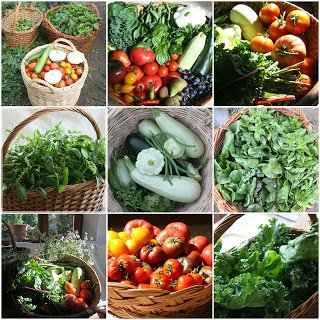
Garden Produce
Inputs and Outputs
The below table summarises the input and outputs. Use the scroll bar at the bottom of the table to move right. You can find all of the data entries here
Photos from Study
click here to see video: http://balkanecologyproject.blogspot.bg/2015/12/the-polyculture-market-garden-study.html
Comments on Results and Record Keeping
If you compare our home garden study with the market garden study it's clear that we are achieving much higher yields in significantly less time and costs at home than in the market garden. I suggest a few of the reasons for this are
-After 10 years of cultivating the home garden beds the soils are in excellent condition and the process is well-versed
-The irrigation plan for the site was not adequate and crop growth was inhibited by lack of water.
-Our initial fertility input was too low. It would have been more economical to use a composted farm yard manure for the initial input and apply at 10 - 15 L per m2. Worm castings are excellent for potting on the seedlings and for planting out with. I also find it invaluable in the bionursery where its provides all round fertility and health to the potted plants but it worked out too expensive to use as an initial fertility input.
-The initial site preparation was far from ideal. Rotary tilling the site broke up rhizomes into thousands of pieces resulting in the unwelcome growth of a local Mint in the vegetable beds. If we were to repeat the set up process I would certainly take the time and resources to sheet mulch the area the summer before planting it out.
-The volunteer team had little or no prior experience in the garden. The point is for the team to learn on the job and the results should indeed reflect the time it takes novices to run the garden.
- Its was also our first time managing this project and we were also learning on the job.
This being the first year of the study and working with a group we had some issues with the record keeping. That said, I feel we have not drastically misrepresented the reality of the workload but I have certainly recognized where improvements can be made. A method that we'll be using next year is to record the time it takes 4 people to undertake a certain task over say 10 m of a bed. We'll then divide the time by 10 to establish the time it takes to do each task per m2 and take the average between the 4 as our record. We can account for rests, disturbances and slowing down by adding 15% to the record. This way we have a standardized method that can be replicated easily and we do not take the soul out of the activity with constant attention to a clock. Its also an easy to replicate method. For a breakdown of our records see the management sheet in the main spreadsheet.
Also included in the records is the establishment and management of a biomass patch dedicated to growing comfrey that we will use for making a liquid feed for the crops. The biomass patch also includes a nitrogen fixing hedgerow that once established will be used as chop and drop fodder to feed the comfrey patch.
Comfrey 'Bocking 14' beds planted out in March. The above photo shows the beds well established by October
The time for preparing the produce for market was estimated at 2 hrs per week. We had lots of other produce from the forest garden and nursery going to market and we did not separate the time spent on produce just from this garden.
The market value of the produce was estimated based on the average prices we were receiving from local buyers, veggie boxes and Trustika buyer's club in Sofia. We did not actually sell all of the produce from the garden as listed. Some of the produce was consumed by the team, others preserved.
Certain tools and equipment we had prior to the study are not included in the capital costs, such as the car, trailer and van and some gardening tools.
Not included in the records were other tasks carried out around the site such as building compost bins, harvesting stakes and support sticks, shaping paths around the garden establishing beneficial habitat such as wildlife ponds, hedgerows/stick piles and compost sites, watching wildlife and general relaxing.
Improvements for Next Year
Including the full polyculture
This year we focused on establishing the annual beds and recording the production from the Aceaes. This is only a small portion of the production we see from our gardens. Our polyculture gardens include nursery plants, perennial herbs and vegetables, hay, fruits, nuts, wood, animal fodder, mulch and liquid fertilizer. We're looking to extend the records to include at least some of these products from the gardens.
Control Experiment
Next season we will make a direct comparison and grow the same crops in monoculture blocks at the same time, in the same area. We'll have two beds planted out with the polyculture and two beds with the same crops plants in blocks. The remaining two beds will be for a new guild.
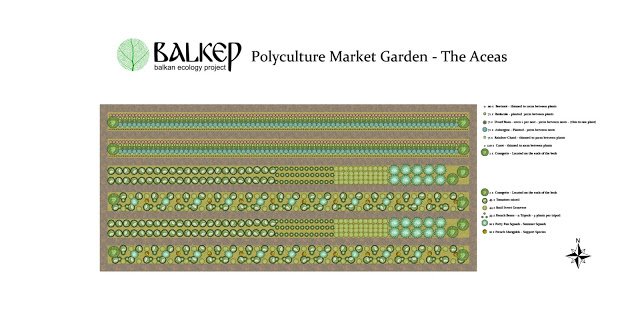
New bed layout for 2016 including the same crops grown in blocks for comparison and the two northern beds planted out with a new annual vegetable polyculture we'll be trialing.
New Polyculture
The team designed their own guilds in the experimental beds most of which seemed to work well. Using some of the combinations from their experimental polycultures we'll try a new polyculture next season. Its a very intensive planting scheme and will require heavy compost inputs. We'll see how it goes.
I've started to name the various annual polycultures we grow after the Stoics, this ones called Epictetus.
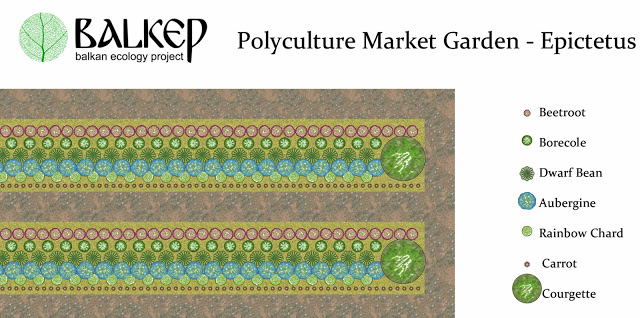
Biodiversity Study
Next year my brother Peter Alfrey has agreed to run invertebrate surveys in April - July - Sep. We'll be focusing specifically on model groups of invertebrates. Among these groups are snails, spiders, insects - bugs, flies, moths and butterflies.
Sharing, Feedback and Collaboration
We have our record keeping spreadsheets on Google Drive. These spreadsheets (here) include all of the data entries and task descriptions. (note there are multiple sheets that can be accessed from the blue tabs running along the top of the sheet). If you would like to keep your own records we'd be happy to give you a copy of the spreadsheet, just drop us an email or leave a comment below with your contact details and we will send it over to you.
If you have any suggestions and feedback on how you think we could improve the study or you have heard about or practice similar studies on other guild/polycultures we'd love to hear from you.
For more info and links to research check out the PIRN ( Permaculture International Research Network ) and the Permaculture Research Digest.
Congratulations @balkep! You have completed some achievement on Steemit and have been rewarded with new badge(s) :
Click on any badge to view your own Board of Honor on SteemitBoard.
For more information about SteemitBoard, click here
If you no longer want to receive notifications, reply to this comment with the word
STOP